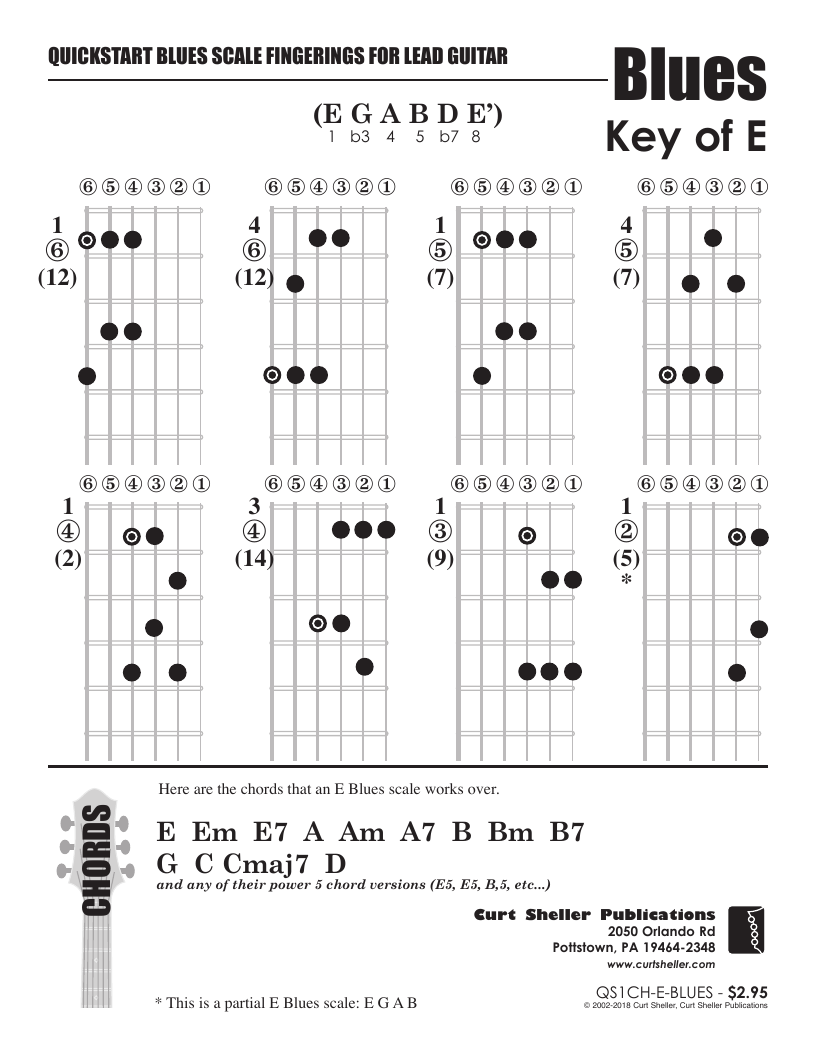
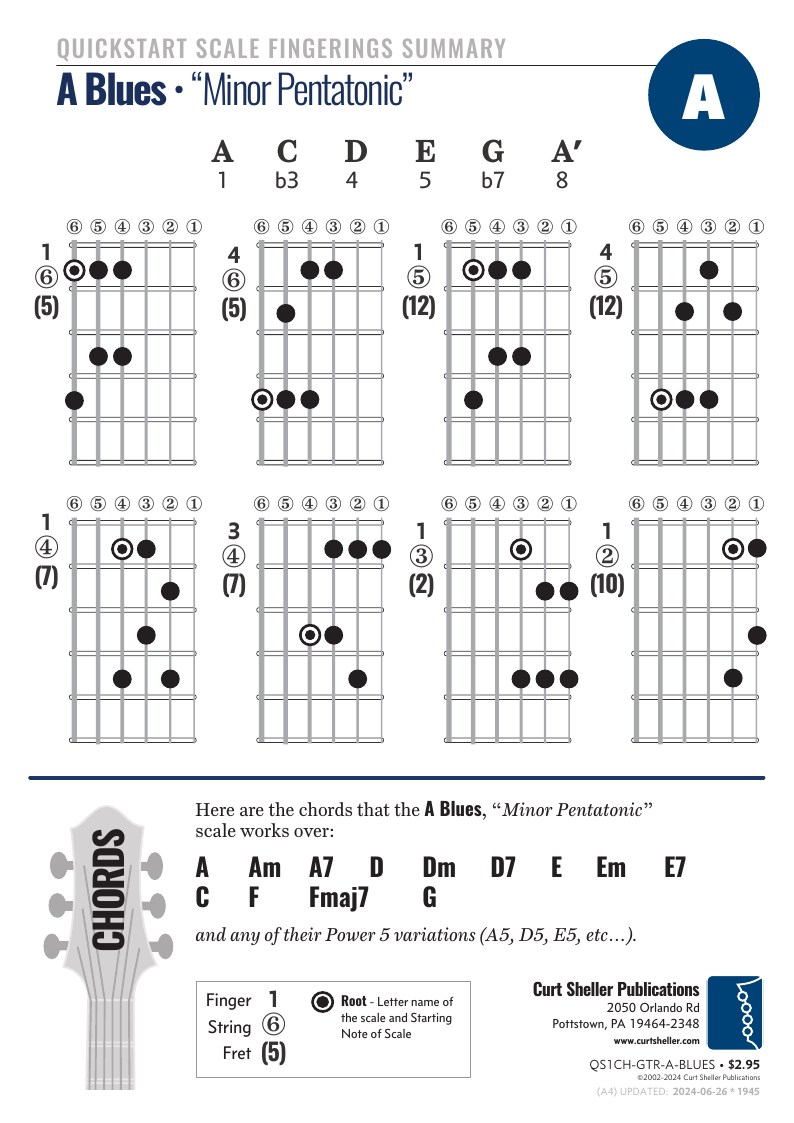
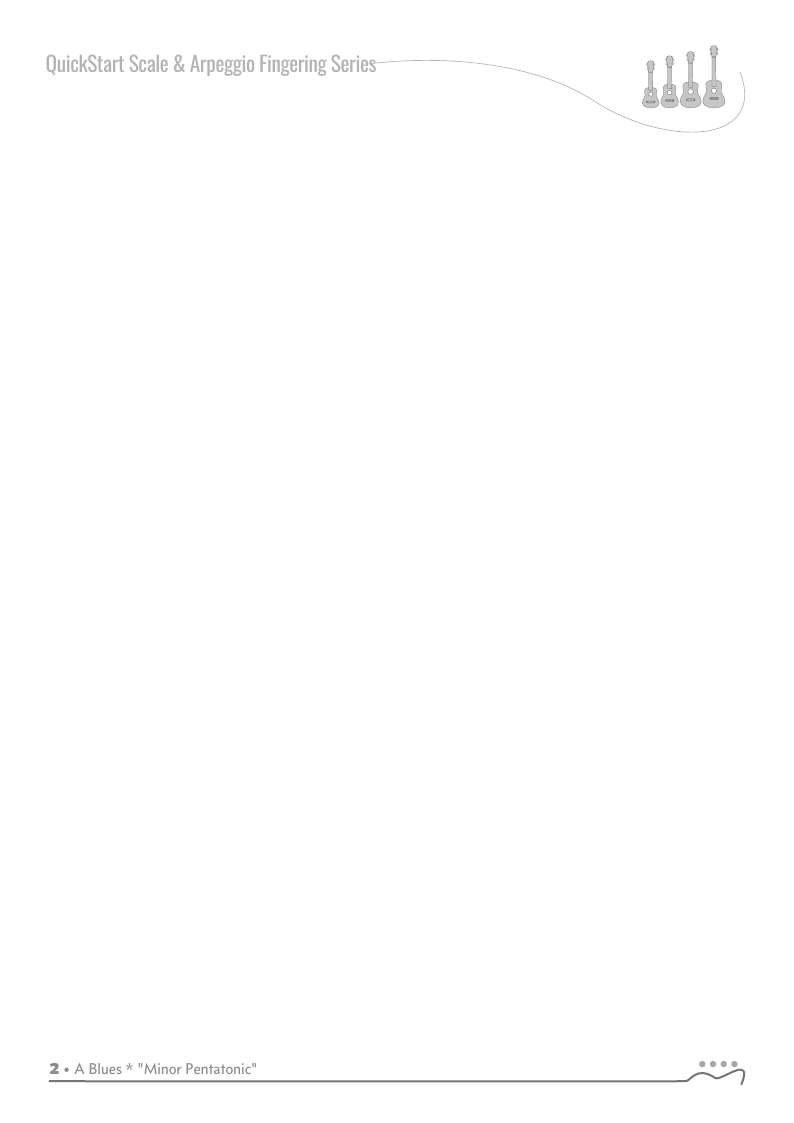



Single sheet summary of the A and E Blues Scale fingerboard shapes for guitar in standard tuning.
Available for Premium Site Access Plans Only
Sorry, can't give it ALL away!
This content requires a Premium / Gold Access Plan or enrolled in the Study with Curt - On-line or Private Lesson Program.
To view additional content for this page you'll need to either Sign In or Register or Upgrade to a Premium Site Access Plan .
NOTE: You should notice that the “shapes” are the same for both the A and E Blues Scales. You really should simply transpose the “shape” to the required root and key. And you do not need to see the same shape, simply at a different location on the fingerboard. Which really drives home the point that guitar players don't and should know the fingerboard and not have to rely on “shapes” eventually.
Under 30 Seconds
A good goal is to be able to play all seven (7) one-octave positions and the partial in under thirty seconds.
Practice Tips
- Root, (the letter name of the scale) to the Octave — Ascending,
- Octave to Root — Descending
- Random Order — Start on any note of the scale and end on any note of the scale. The scales can be extended below and above the root on the staring string and above the octave on the ending string.
- Start on Any Finger, Any String — The QUICKSTART Scale and Arpeggio Serieslu of books have example fingering solutions for starting on each finger and string.
Single sheet summary of the A and E Blues Scale fingerboard shapes for guitar in standard tuning.
Available for Premium Site Access Plans Only
Sorry, can't give it ALL away!
This content requires a Premium / Gold Access Plan or enrolled in the Study with Curt - On-line or Private Lesson Program.
To view additional content for this page you'll need to either Sign In or Register or Upgrade to a Premium Site Access Plan .
NOTE: You should notice that the “shapes” are the same for both the A and E Blues Scales. You really should simply transpose the “shape” to the required root and key. And you do not need to see the same shape, simply at a different location on the fingerboard. Which really drives home the point that guitar players don't and should know the fingerboard and not have to rely on “shapes” eventually.
Under 30 Seconds
A good goal is to be able to play all seven (7) one-octave positions and the partial in under thirty seconds.
Practice Tips
- Root, (the letter name of the scale) to the Octave — Ascending,
- Octave to Root — Descending
- Random Order — Start on any note of the scale and end on any note of the scale. The scales can be extended below and above the root on the staring string and above the octave on the ending string.
- Start on Any Finger, Any String — The QUICKSTART Scale and Arpeggio Serieslu of books have example fingering solutions for starting on each finger and string.
Related Lessons, Videos, Lesson Series, Songs, Books & Reference Charts, Resources & Assets, Workshops are below.

Finally, learn the names of the notes of the ukulele fingerboard in C tuning .

Learn the six fingering principles to navigating the ukulele fingerboard. Fingering is one of the most universal topics. Book: Six Secrets of the Ukulele Fingering

Harmonic Analysis is the understanding of the functional sequence of chords. It is the process used to analyze the harmonic structure of a progression, song or composition. Book: Harmonic Analysis for Scale Selection and Chord Substitution

Learn to read single note melodies in the first/open position is a lot easier than you might think. Book: Ukulele – Reading Music Series – Primer

An organized collection of daily practice and reference material for the contemporary ukulele player for developing the vocabulary and knowledge necessary for single note playing. Book: Daily Practice Material for the Contemporary Ukulele
Checkout the Books & Reference Charts for additional Handy, Dandy Reference Charts.

Ukulele Fingerboard Chart for C Tuning, Low or High G – G C E A

Ukulele Fingerboard Chart for G Tuning, Low or High A – D G B E

A handy reference chart of all 15 major and relative minor key signatures. US Letter 8.5 x 11 sized (ANSI-A), A4
Checkout the Books & Reference Charts for additional Handy, Dandy Reference Charts.



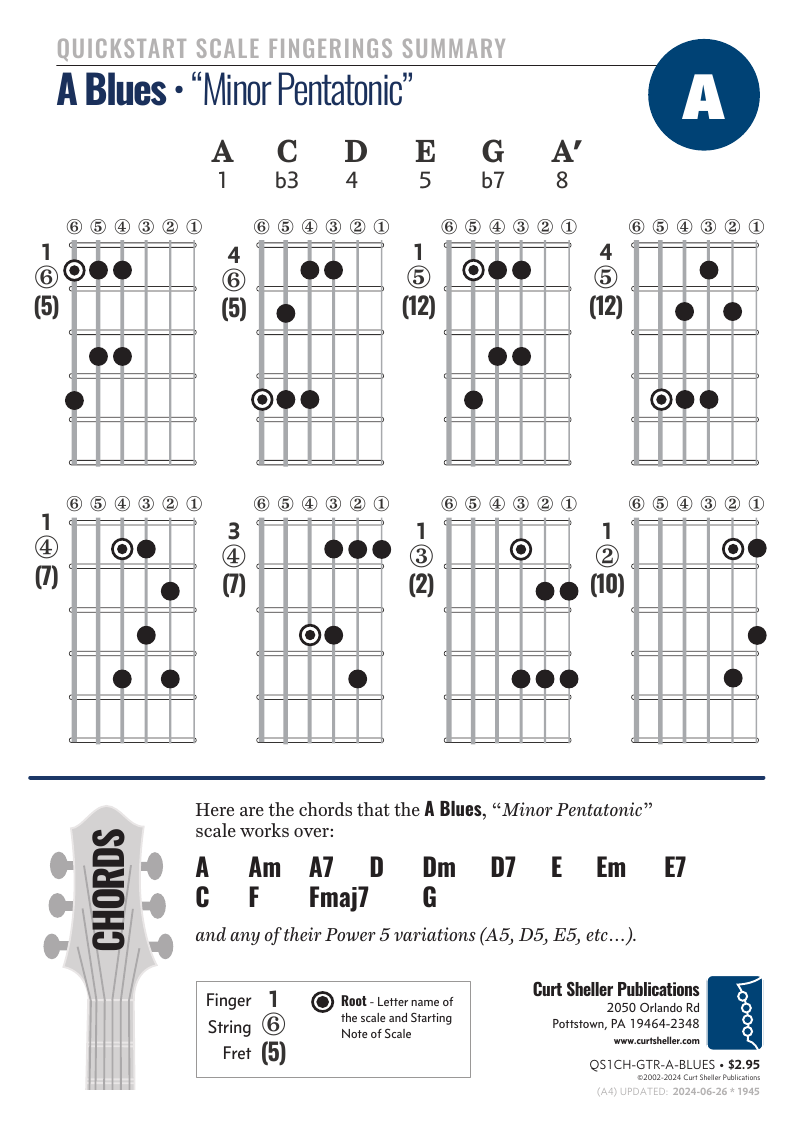
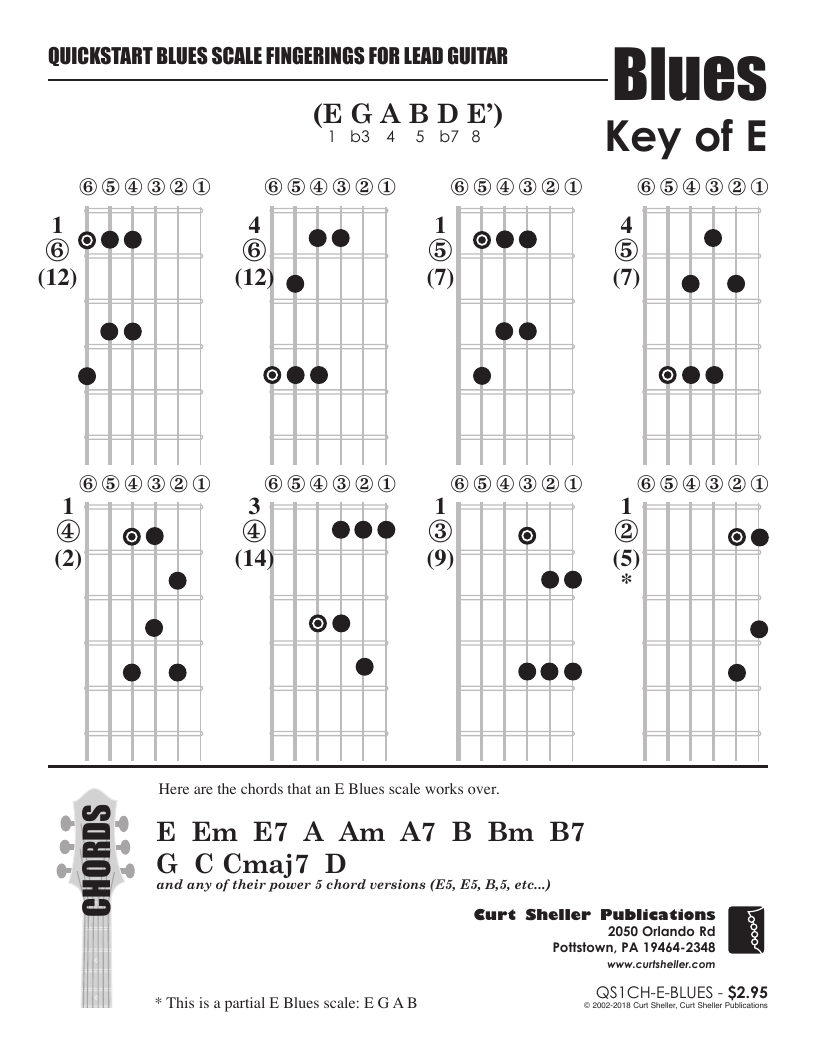
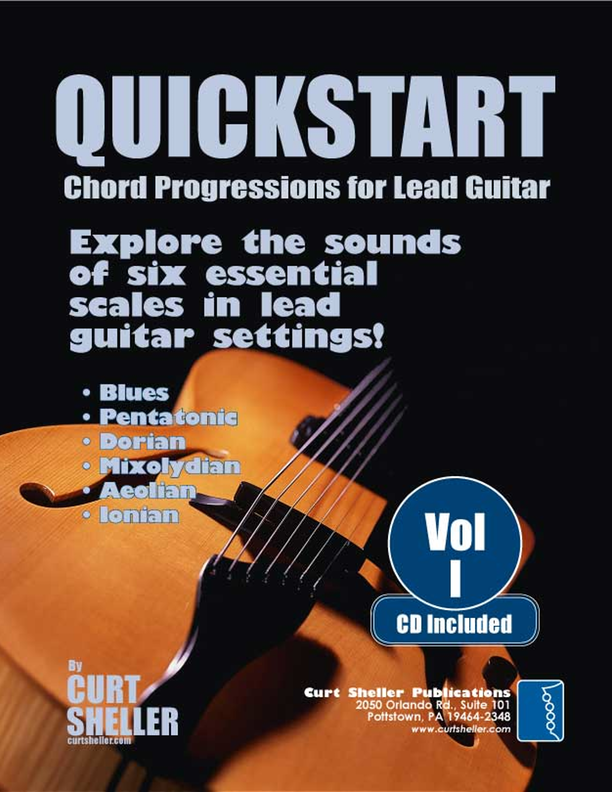
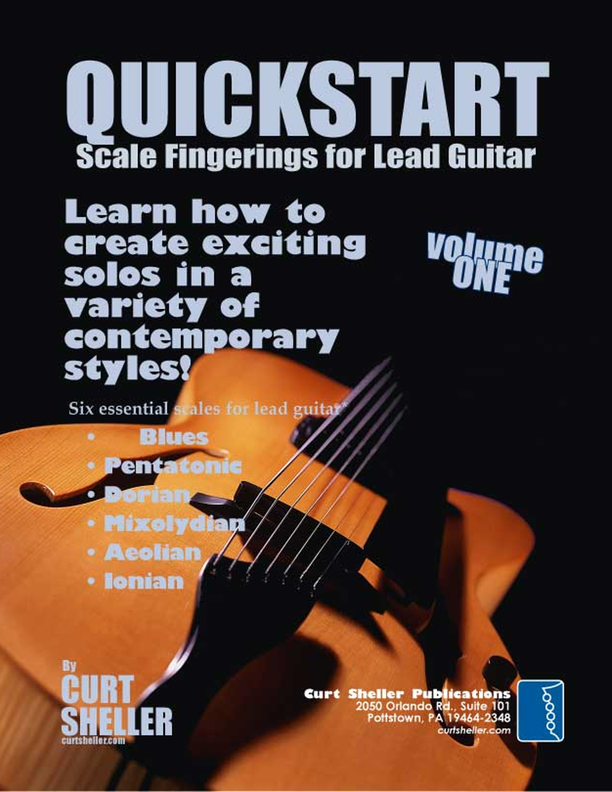
.jpg)